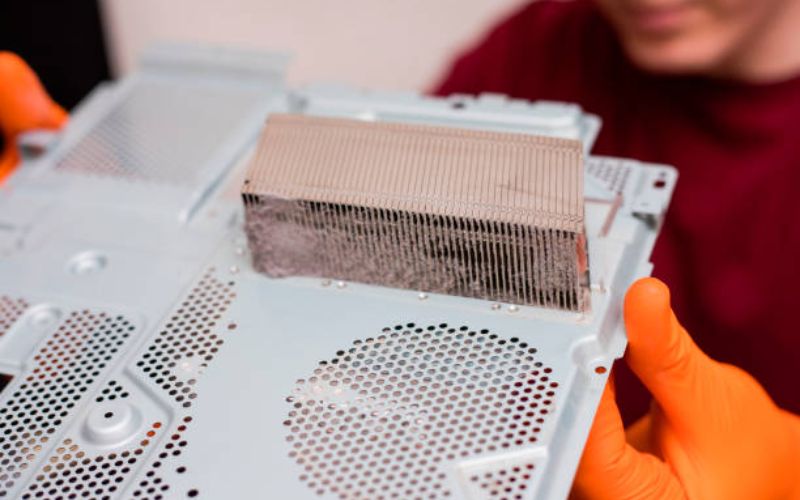Introduction: Understanding Heat Sink’s in Electronics
Heat sinks have been around since the advent of electronics. These passive cooling devices help conduct heat away from electronic components, thereby preventing overheating and prolonging the lifespan of the equipment. But how do heat sinks work, and do they really make a difference in lowering the temperature of the components they are attached to?
The Mechanism of Heat Transfer in Heat Sinks
Heat sinks work on the basic principle of heat transfer, which is the process of transferring heat from one body to another. The heat generated by electronic components is conducted through the metal base of the heat sink and is then radiated away by the fins. The larger the surface area of the fins, the more heat can be dissipated, which explains why heat sinks are designed with an array of fins that increase the surface area exposed to the surrounding air.
Factors that Affect the Performance of Heat Sinks
The efficiency of a heat sink depends on several factors, including its size, shape, and material. Larger heat sinks are generally more effective because they have a larger surface area, allowing for greater heat dissipation. Heat sinks made of materials such as copper and aluminum are commonly used due to their high thermal conductivity, which enables them to conduct heat away from the electronic components more effectively.
Active vs Passive Cooling
Heat sinks can be used in conjunction with other cooling methods such as fans or liquid cooling to increase their effectiveness. While passive cooling is generally sufficient for smaller devices such as smartphones and tablets, larger electronic equipment such as servers and gaming computers often require active cooling to prevent overheating.
Frequency of Heat Sink Maintenance
Heat sinks require regular maintenance to ensure optimal performance. Dust and debris can accumulate on the fins, reducing the area of exposed metal and limiting heat dissipation. This can lead to increased operating temperatures and decreased performance. Routine cleaning and dusting of the fins is recommended to maintain optimal performance.
Importance of Proper Heat Sink Installation
Proper installation of the heat sink is crucial to its effectiveness. A poorly installed heat sink may not make good contact with the electronic component, reducing its ability to conduct heat away. Additionally, inadequate thermal compound application can also hamper the heat sink’s performance. Careful attention to installation procedures is crucial to ensure that the heat sink can function as intended.
Choosing the Right Heat Sink for Your Needs
When selecting a heat sink, it is important to consider compatibility with the electronic equipment and the specific application. The size and shape of the heat sink should be compatible with the size and position of the electronic component, and the material should be suitable for the level of heat generated by the device.
Alternative Cooling Methods to Heat Sinks
While heat sinks are a common cooling solution in electronics, there are other methods that can be used. Liquid cooling, for example, uses a liquid coolant that circulates through the electronic circuit, absorbing heat and carrying it to a radiator where it can be dissipated. Other methods include thermoelectric cooling and phase-change cooling, both of which require more complex equipment and are typically reserved for high-performance applications.
Understanding the Limits of Heat Sink Performance
Heat sinks have limitations to their effectiveness, and may not be able to cool electronic components to below ambient temperatures. In high-performance applications, active cooling methods such as liquid cooling may be required to achieve the desired temperature reduction. Additionally, other factors such as ambient temperature and airflow can impact the effectiveness of a heat sink in dissipating heat.
Conclusion: The Importance of Heat Sinks in Electronics
Heat sinks play a crucial role in preventing overheating and prolonging the lifespan of electronic components. Understanding the mechanics of heat transfer, as well as the factors that affect heat sink performance, is important for selecting and installing the appropriate cooling solution for your electronic equipment. Proper maintenance and installation can ensure that the heat sink functions optimally and protects your equipment from the damaging effects of overheating.
Quote Inquiry
Contact us!

